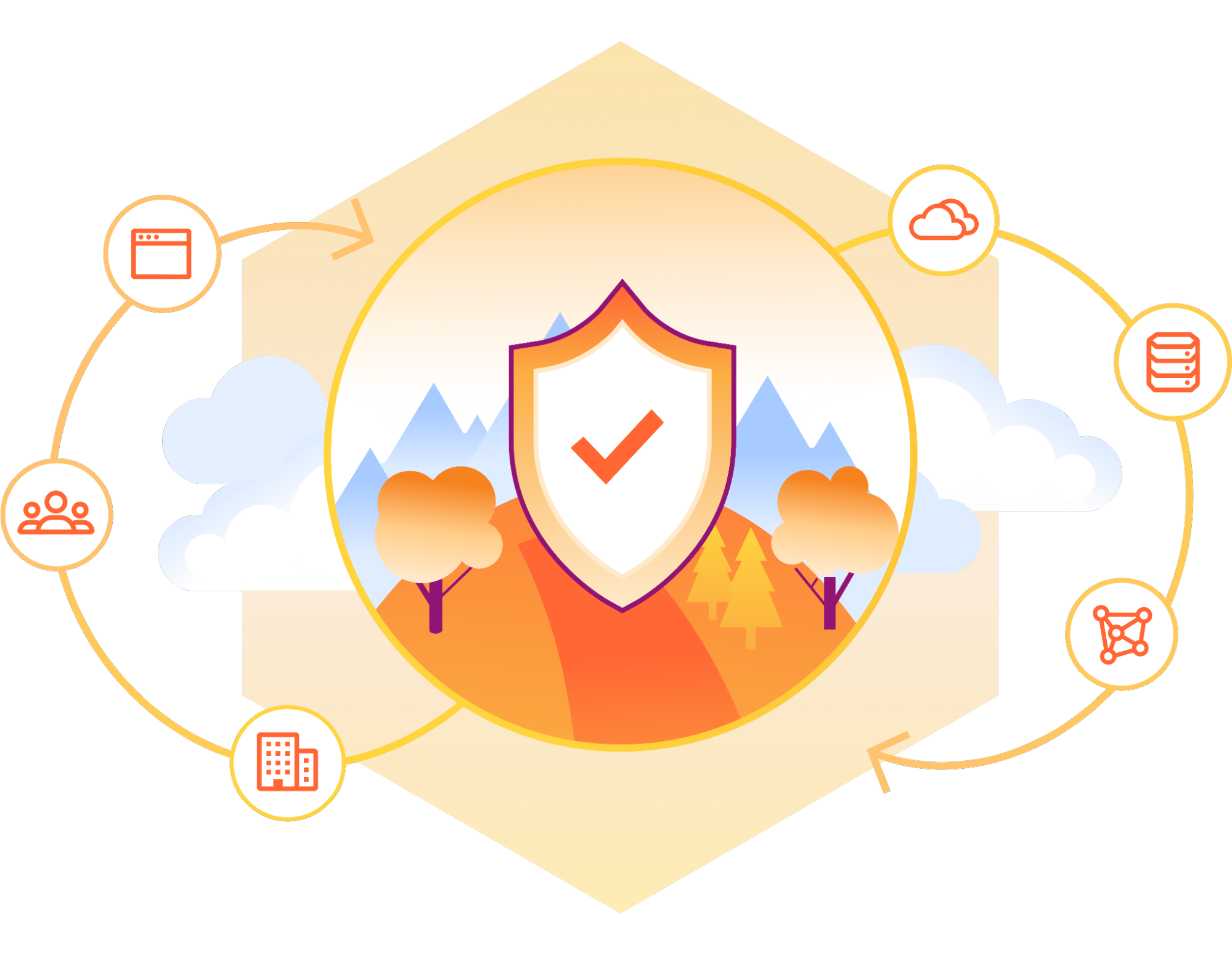Day Two Cloud: The Duality of Enterprise AI
Welcome to a crossover episode with the Day Two Cloud podcast! AI has been around forever; AI is emergent. AI is just data analytics; AI hallucinates. AI doesn’t have many business use cases; AI is already being used by your employees. Today, Greg and Johna from the Heavy Strategy podcast join Day Two Cloud to... Read more »Hedge 222: Get out there and publish!
Eric Chou joins Tom and Russ to talk about the importance of creating content, and the many tools and ideas you can use to get out there and publish. You’ve heard us talk about this a lot–now it’s time to get out there and publish.
Cloudflare named in 2024 Gartner® Magic Quadrant™ for Security Service Edge

Gartner has once again named Cloudflare to the Gartner® Magic Quadrant™ for Security Service Edge (SSE) report1. We are excited to share that Cloudflare is one of only ten vendors recognized in this report. For the second year in a row, we are recognized for our ability to execute and the completeness of our vision. You can read more about our position in the report here.
Last year, we became the only new vendor named in the 2023 Gartner® Magic Quadrant™ for SSE. We did so in the shortest amount of time as measured by the date since our first product launched. We also made a commitment to our customers at that time that we would only build faster. We are happy to report back on the impact that has had on customers and the Gartner recognition of their feedback.
Cloudflare can bring capabilities to market quicker, and with greater cost efficiency, than competitors thanks to the investments we have made in our global network over the last 14 years. We believe we were able to become the only new vendor in 2023 by combining existing advantages like our robust, multi-use global proxy, our lightning-fast DNS resolver, our Continue reading
Sysadmin friendly high speed ethernet switching
Sysadmin friendly high speed ethernet switching
I’ve been on the lookout for a ethernet switch that I don’t hate, the problem with a lot of higher
With AI Dominating, Cisco Pivots to Hypershield for Data Centers and Clouds
Think of Hypershield as an AI-enabled security fabric where every network port becomes a high-performance enforcement point.Cross compiling Rust to Ubiquiti access point
This is not the right way to do it, as will become abundantly clear. But it works.
Set up build environment
rustup toolchain install nightly
rustup component add rust-src --toolchain nightly
apt install {binutils,gcc}-mips-linux-gnu
Create test project
cargo new foo
cd foo
Build most of it
This will build for a while, then fail.
cargo +nightly build --release -Zbuild-std --target mips-unknown-linux-gnu
For some reason it’s trying to use cc to link. I tried putting this
in Cargo.toml, but it does nothing:
[target.mips-unknown-linux-gnu]
linker = "mips-linux-gnu-gcc"
But I found a workaround.
Temporarily change /usr/bin/cc to point to the mips gcc
It does not work if you do this before the previous step.
PREV="$(readlink -v /usr/bin/cc)"
sudo rm /usr/bin/cc
sudo ln -s /usr/bin/mips-linux-gnu-gcc /usr/bin/cc
Link the program
Same command again
cargo +nightly build --release -Zbuild-std --target mips-unknown-linux-gnu
It should succeed. Yay.
Restore /usr/bin/cc
sudo rm /usr/bin/cc
sudo ln -s "${PREV?}" /usr/bin/cc
Change the “interpreter” to what the Ubiquiti system expects
cd target/mips-unknown-linux-gnu/release
patchelf --remove-needed ld.so.1 foo
patchelf --set-interpreter /lib/ld-musl-mips-sf.so.1 foo
Building it again
Probably easiest to rm -fr target, and go back to the step “Build
most of it”.
Does it work?
$ ./foo
Hello, world!
Yay!
Links
- https://doc.rust-lang.org/rustc/targets/custom.html
How CISOs Can Contend With Increasing Scrutiny from Regulators
Senior stakeholders who want to hold on to their CISOs must ensure that they have sufficient incentives and, more importantly, support to cope with the burden of risk that they are carrying.D2C240: The Duality of Enterprise AI
AI has been around forever; AI is emergent. AI is just data analytics; AI hallucinates. AI doesn’t have many business use cases; AI is already being used by your employees. Today, Greg and Johna from the Heavy Strategy podcast join Day Two Cloud to give their takes on enterprise AI. Johna brings with her the... Read more »What Happens When Hyperscalers And Clouds Buy Most Servers And Storage?
We have a long-standing joke that dates from the early 2000s, when the hyperscalers – there were not yet cloud builders as we now know them – started having hundreds of millions of users and millions of servers and storage arrays to run applications for them at the same time there was the beginnings of consolidation among the OEMs who created the servers and storage used by nearly all enterprises, including dot-com startups. …
What Happens When Hyperscalers And Clouds Buy Most Servers And Storage? was written by Timothy Prickett Morgan at The Next Platform.
NAN060: Python for Network Engineering with Kirk Byers (Part 2)
This is Part 2 of Kirk Byers’ interview. We discuss the Git course he’s developing and the need to build bridges between networking and testing so we can move automation forward. This of course leads us to geek out about AutoCon and the talks we’re most excited about. Plus, Kirk shares his wisdom about creating... Read more »Tracking EC2 Instances used by EKS with AWS CLI
As a sort of follow-up to my previous post on using the AWS CLI to track the specific Elastic Network Interfaces (ENIs) used by Amazon Elastic Kubernetes Service (EKS) cluster nodes, this post focuses on the EC2 instances themselves. I feel this is less of a “problem” than tracking ENIs, but I wanted to share this information nevertheless. In this post, I’ll show you which AWS CLI command to use to list all the EC2 instances associated with a particular EKS cluster.
If you read the previous post on tracking ENIs used by EKS, you might think that you could use a very similar AWS CLI command (aws ec2 describe-instances instead of aws ec2 describe-network-interfaces) to track the EC2 instances in a cluster—and you’d be mostly correct. Like the ENIs, EKS does add a cluster-specific tag to all EC2 instances in the cluster. However, just to make life interesting, the tag used for EC2 instances is not the same as the tag used for ENIs. (If someone at AWS knows of a technical reason why these tags are different, I’d love to hear it.)
Instead of using the cluster.k8s.amazonaws.com/name tag that is used Continue reading
Power Efficiency, Customization Will Drive Arm’s Role In AI
More than a decade ago, executives at Arm Ltd saw the energy costs in datacenters soaring and sensed an opportunity to extend the low-power architecture of its eponymous systems-on-a-chip that has dominated the mobile phone markets from the get-go and took over the embedded device market from PowerPC into enterprise servers. …
Power Efficiency, Customization Will Drive Arm’s Role In AI was written by Jeffrey Burt at The Next Platform.
Navigating the NaaS Era with a Customer-First Approach
With many enterprises new to NaaS, service providers can differentiate themselves from competitors by prioritizing superior customer service and experiences.How Cloudflare Cloud Email Security protects against the evolving threat of QR phishing

In the ever-evolving landscape of cyber threats, a subtle yet potent form of phishing has emerged — quishing, short for QR phishing. It has been 30 years since the invention of QR codes, yet quishing still poses a significant risk, especially after the era of COVID, when QR codes became the norm to check statuses, register for events, and even order food.
Since 2020, Cloudflare’s cloud email security solution (previously known as Area 1) has been at the forefront of fighting against quishing attacks, taking a proactive stance in dissecting them to better protect our customers. Let’s delve into the mechanisms behind QR phishing, explore why QR codes are a preferred tool for attackers, and review how Cloudflare contributes to the fight against this evolving threat.
How quishing works
The impact of phishing and quishing are quite similar, as both can result in users having their credentials compromised, devices compromised, or even financial loss. They also leverage malicious attachments or websites to provide bad actors the ability to access something they normally wouldn’t be able to. Where they differ is that quishing is typically highly targeted and uses a QR code to further obfuscate itself from detection.
Since Continue reading
FRRouting Loopback Interfaces and OSPF Costs
TL&DR: FRRouting advertises the IP prefix on the lo loopback interface with zero cost.
Let’s start with the background story. When we added FRRouting containers support to netlab, someone decided to use lo0 as the loopback interface name. That device doesn’t exist in a typical Linux container, but it’s not hard to add it:
$ ip link add lo0 type dummy
$ ip link set dev lo0 up
FRRouting Loopback Interfaces and OSPF Costs
TL&DR: FRRouting advertises the IP prefix on the lo loopback interface with zero cost.
Let’s start with the background story. When we added FRRouting containers support to netlab, someone decided to use lo0 as the loopback interface name. That device doesn’t exist in a typical Linux container, but it’s not hard to add it:
$ ip link add lo0 type dummy
$ ip link set dev lo0 up
DNSSEC and .nz
It's a welcome sight to see a careful and thoughtful analysis of a service outage. One such instance was a presentation by .nz's Josh Simpson at the recent NZNOG meeting, reporting on a service outage for .nz domains.Ampere Readies 256-Core CPU Beast, Awaits The AI Inference Wave
How many cores is enough for server CPUs? All that we can get, and then some. …
Ampere Readies 256-Core CPU Beast, Awaits The AI Inference Wave was written by Timothy Prickett Morgan at The Next Platform.